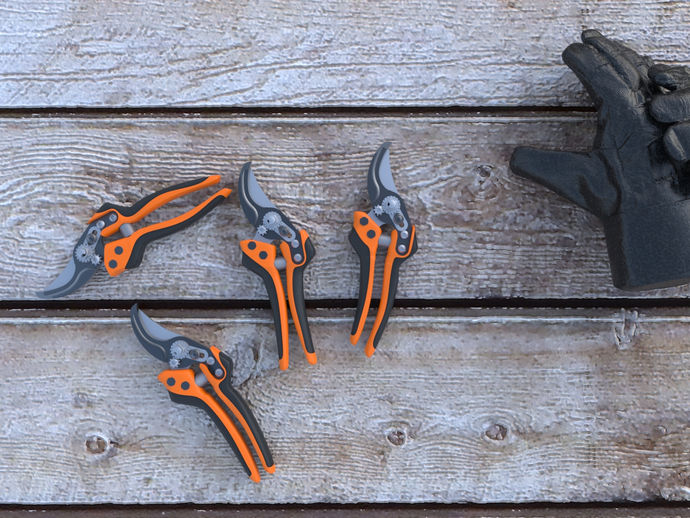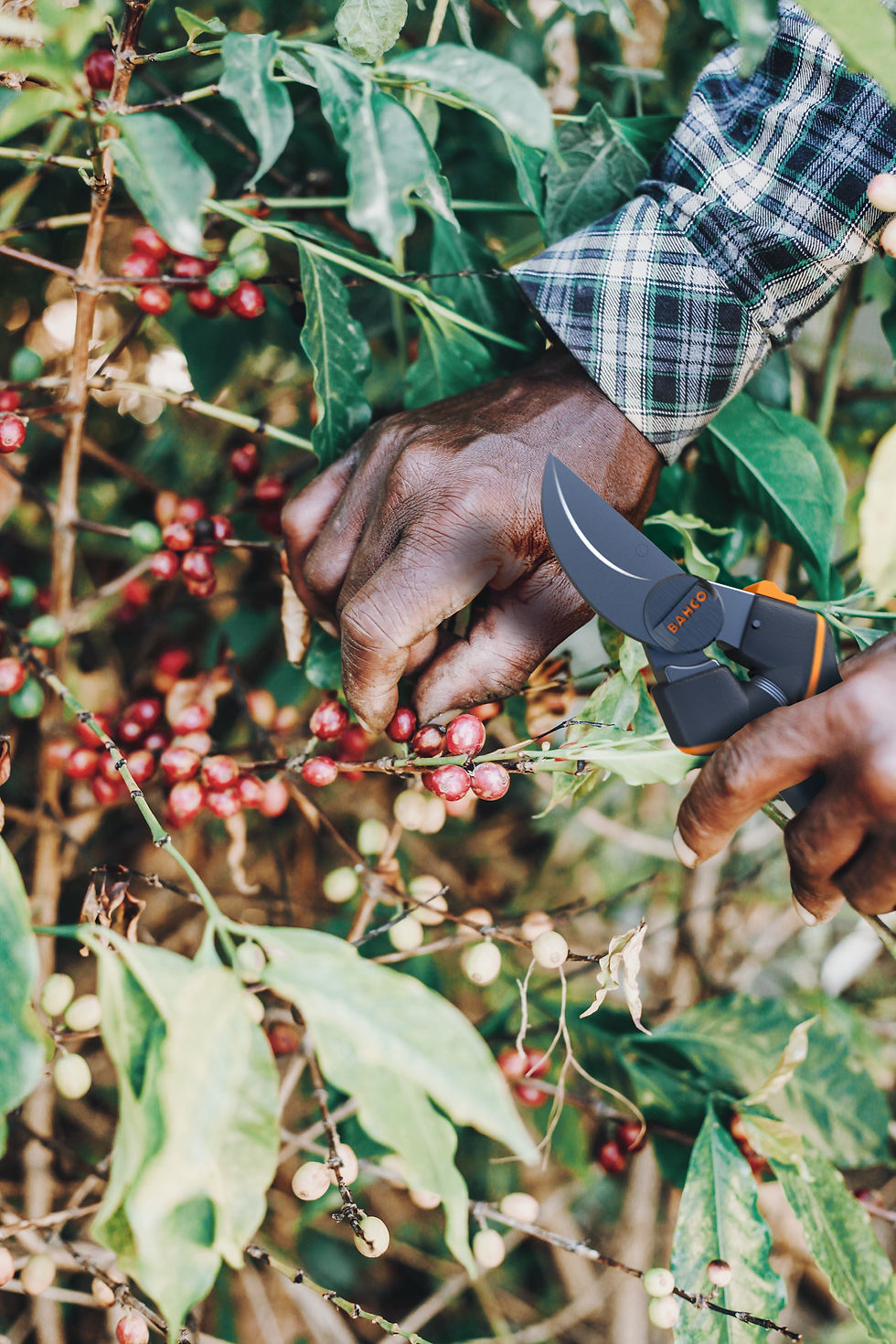Designer & Engineer

Ergo S1
Create Your First Project
Start adding your projects to your portfolio. Click on "Manage Projects" to get started
Project Title
Project Type
Photography
Date
April 2023
This is where the project description goes. Give an overview or go in depth - what it’s all about, what inspired you, how you created it, or anything else you’d like visitors to know. To add Project descriptions, go to Manage Projects.
Ergo Secatuers
Client
Role
Time
Date
Snap-on & Bahco
The Designer
6 months
November 2022
Highlighting the underrepresented role of women in viticulture, these shears are thoughtfully designed with inclusivity in mind. They address ergonomic challenges, aiming to improve leverage geometry and prevent connective tissue disorders caused by repetitive strain while benefiting all individuals working in the industry.



In the 88-billion-dollar California viticulture industry, women’s needs are inadequately considered. Just in the last 5 years, Latin women workers have gone from 5% to 30%. They are quickly rivaling men for majority in the workforce. Yet, they are still being forced to use tools that were not designed with them in mind. This neglect will cause them to develop problems later in life. As designers we cannot let this happen.
ERGONOMICS
Simplifying and Optimizing
Through user-centered design


QuickLock
Pro Secateurs
Full aluminum chassis for increased rigidity
Two Stage Lock limits opening to "active zone"
Chassis geometry keeps handles closer
New chassis is truly universal

Redesign
Secateurs
Centered spring perch for stable cuts
Ergonomics keeps it firmly in hand for all sizes
Finger well, and simplified handle shape
ERGONOMICS
Simplifying and Optimizing
Through user-centered design

Centered spring perch for stable cuts
Full alluminum chassis for increased rigidity
Improved Bahco Secateurs
All New, Quick Lock Concept
"When I need to put in the most effort the handles start to bend and let me down"
"The handles always fling out of my hand, they open way to wide"
Ergonomics keeps it firmly in hand for all sizes




Two Stage Lock limits opening to "active zone"
Chassis geometry keeps handles closer
Finger well, and simplified handle shape
New chassis is truly universal
"I can never find the right size for my hand, I don't even know who they make these for"
Utilizing quantitative research provided by Snap On and qualitative ergonomic research conducted by my team, we consistently conducted user testing involving a group of eight workers. Their feedback on the tool’s design was thoroughly considered throughout our process. Following the departure of my team, I continued our work and redefined all touch points to align with the most natural placement. A redesigned pivot mechanism was implemented to facilitate smoother movement, reducing strain and enabling swift blade replacement without the need for additional tools. The new chassis adopts an optimized shape for enhanced leverage, bringing the handles closer and ensuring they remain within the "active region" of the tool's use.
Methodolgy
Designing a tool that improves life for all workers.
Compiling all the research data and advancing through multiple rounds of user testing allowed us to simplify the forms and incorporate subtle ergonomic features into each handle. The iterative testing of the chassis shape for leverage and handling played a key role. This process resulted in an improved chassis that boasts an optimized ratio between blade and handle openings, significantly reducing the effort required for cutting. This phase of the design process is crucial as it moves ideas from paper and CAD into the real world, ensuring an actual assessment of functionality.
Handles & Blades
& Mechanisms, oh my!

We observed that workers exhibited varying comfortable grips. To facilitate ideation, we utilized basic molding clay to translate our concepts into three-dimensional models, allowing individuals to interact and assess them tactilely. Analyzing the outcomes derived from these individualized and adaptable forms, we discerned nuanced elements contributing to comfort among all workers. From these findings, we developed more universally applicable models that retained the comfort attributes identified in the specialized forms, while offering an expanded range of ergonomic grips accessible to the workers.
Simplyfing complex forms.
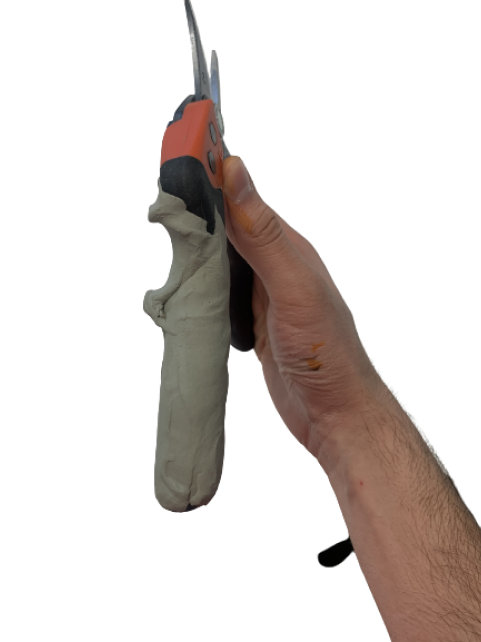



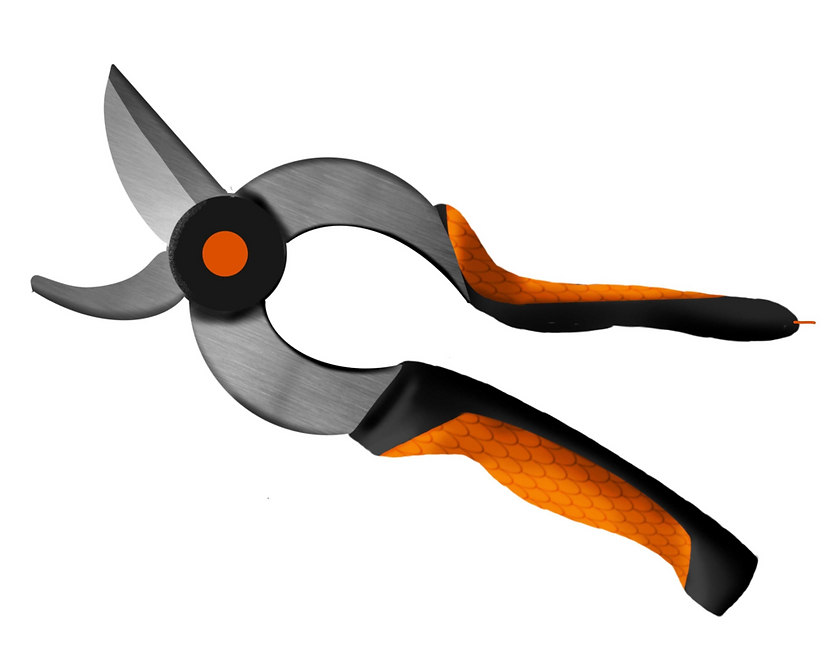
Early Sketches
By extending the lever arm length from its pivot point, the handles will experience an increase in mechanical advantage. However, in the context of designing secateurs, the handle length is limited by the tool's essential portability. Introducing a pronounced bend in the handles from the pivot point could effectively bring the lever closer to a perpendicular position, enhancing the mechanical advantage without necessitating excessive handle length.
Increasing length of lever to the pivot point.
Following discussions with viticulture workers and farm owners, a prevailing concern emerged regarding the durability of their secateurs. Each pruning season, the pivot point's susceptibility to stickiness and rust from accumulated debris and grape residue increased the force required for pruning. Rusty bolts hindered blade replacement, leading to prolonged use of blunt blades and further strain on their hands. Additionally, the need to carry multiple tools became burdensome during their extensive travels across the farm, highlighting the necessity to reduce the load and alleviate physical strain.
Remove multiple bolts and rusty failure points.
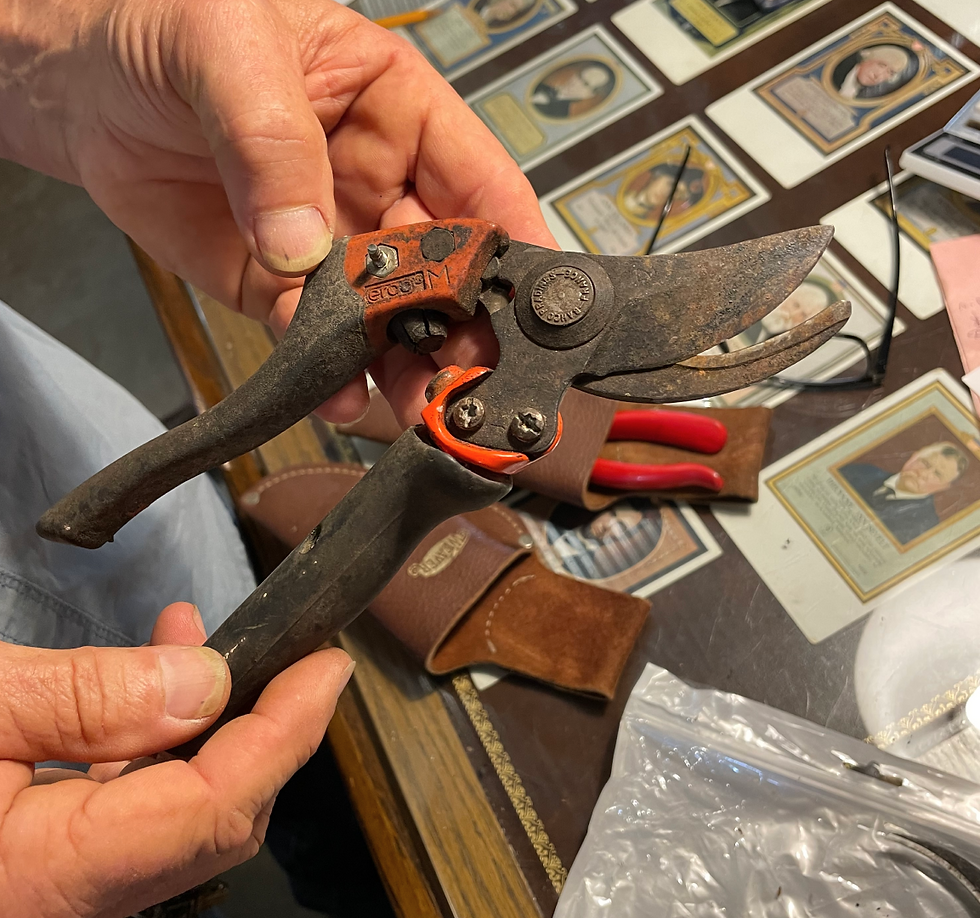

QuickLock
Pro Secatuers
Overview

Secured by posts and pressure from the two main bodies.
Quick Change Blades
Main post facillitates internal pivot to protect against dirt and grime
Bottom Body
Lock moved to optimal position for less strain. First stage is full lock, second stage limits the tools opening, keeping it in the "active zone"
2 Stage Thumb Lock
Take apart the secatuers with only one turn and no tools.
Lock Cap
No more losing springs. The guide has a deep well thats holds it in and follows the natural curve of the spring
Spring Guide

By using an inclusive design process, the solution led to a tool that benefits all workers. The closer grip reduces the amount of hand strain the workers need to go through. It gives them an easier time indexing the tool and overall better control. This simultaneously eliminated the need for multiple sizes, with a close grip, improved leverage and ergonomics designed for multiple grips, every worker has found this tool comfortable to operate and adequate for pruning thick vines.
Closer grip. Better for
women, better for everyone

QuickLock
Pro Secatuers


3.25 inches
1 inch
Improved Chassis reduces handle width while simultaneously increasing blade width capabilities. Women test user's said they felt that they had better leverage with the new chassis and made easier cuts.
Final Classic Style Chassis
These designs explore every primitive ergonomic shape ranging from convex to concave. Each of these concepts eliminates existing pain points in the current bypass secateurs handles. Their subtle silhouettes and ergonomic features do not alienate any users hand size or shape and creates a more inclusive design for all types of users. They allow for a multitude of hand positions and proper index finger rest.
Testing each of these will give a valuable data on which convex or concave style Bahco users feel the most comfortable utilizing while they work and give better guidance for the brand in future products

Better accessibility for smaller hands and feels more natural in the hand
Concave Handle
Increased length from pivot point for better leverag
Handle Length
Gives better visibility, blade indexing and awareness
Reduction in Blade Angle
Reduce handle bending and increase rigidity and weak point.
Centered Spring
Allows for more hand position and better handling of the tool.
Index Finger Well




